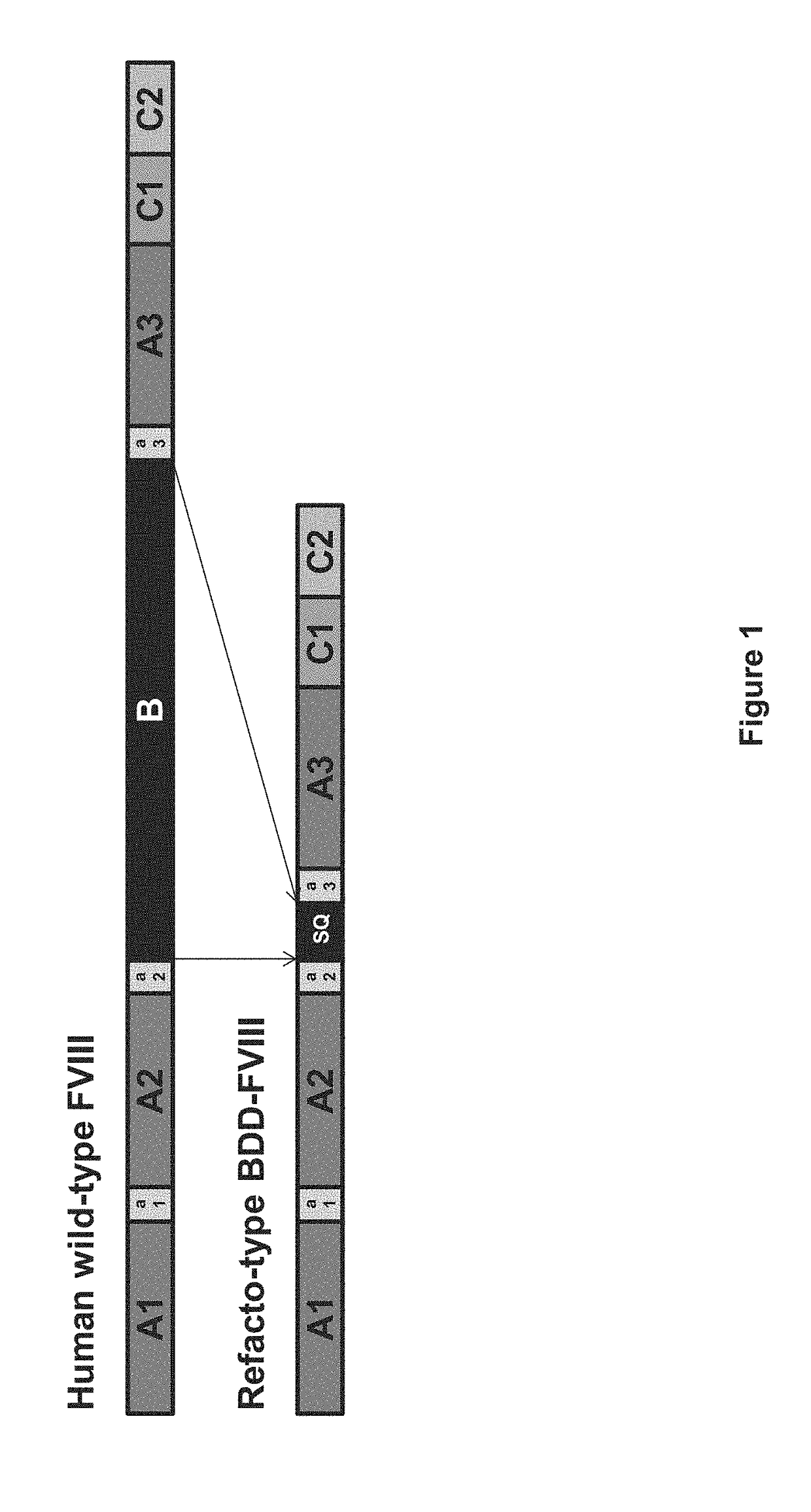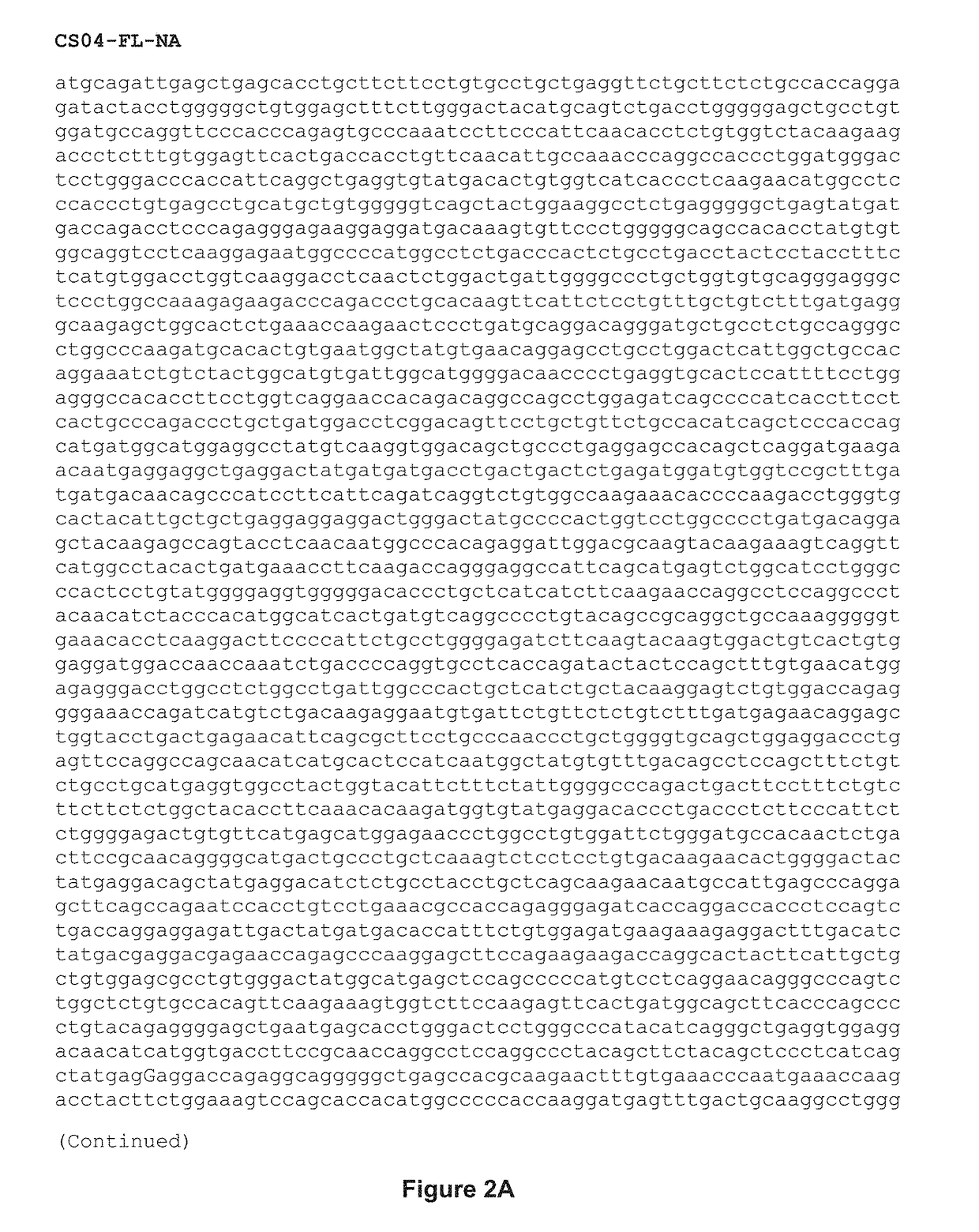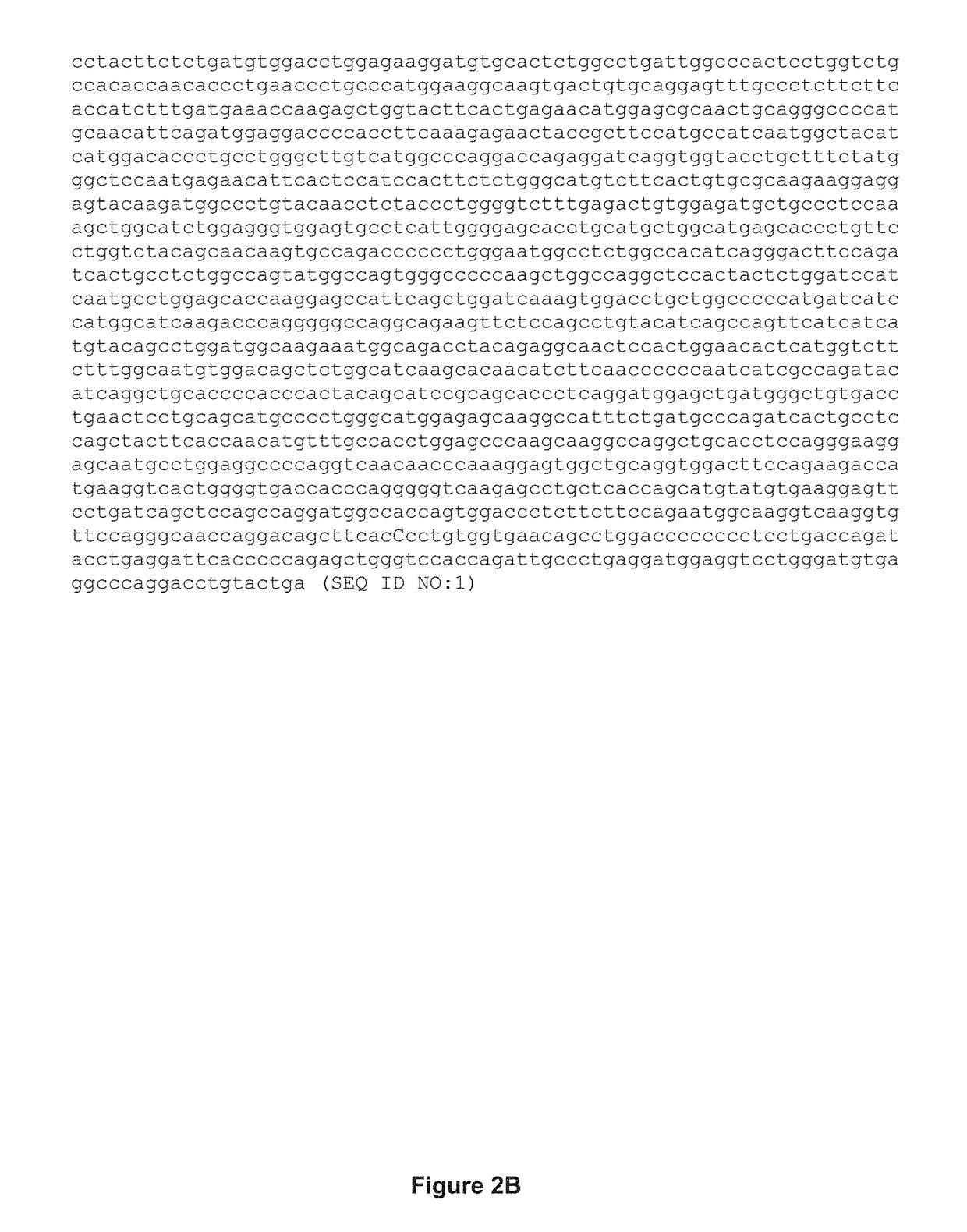Viral vectors encoding recombinant fviii variants with increased expression for gene therapy of hemophilia a
- Summary
- Abstract
- Description
- Claims
- Application Information
AI Technical Summary
Benefits of technology
Problems solved by technology
Method used
Image
Examples
example 1
Construction of a Codon Altered Factor VIII Variant Expression Sequence
[0358]Two hurdles had to be overcome in order to create a Factor VIII coding sequence that is effective for gene therapy of hemophilia A. First, because of the genomic size limitations of conventional gene therapy delivery vectors (e.g., AAV virions), the encoded Factor VIII polypeptide had to be shortened considerably. Second, the coding sequence had to be altered to: (i) stabilize packaging interactions within the delivery vector, (ii) stabilize the mRNA intermediary, and (iii) improve the robustness of transcription / translation of the mRNA.
[0359]To achieve the first objective, Applicants started with a B-domain deleted Factor VIII variant construct, referred to herein as “FVIII-BDD-SQ.” In this construct, the B-domain is replaced with a fourteen amino acid sequence referred to as the “SQ” sequence. Recombinant FVIII-BDD-SQ is sold under the trade name REFACTO®, and has been shown to be effective for the manage...
example 2
In Vivo Expression of Codon Altered Factor VIII Variant Expression Sequences
[0375]To test the biological potency of the codon-altered Factor VIII variant sequences, the ReFacto-type FVIII constructs described in Example 1 were administered to mice lacking Factor VIII. Briefly, the assays were performed in C57B1 / 6 FVIII knock-out (ko) mice (with 6-8 animals per group) by tail vein injection of 4E12 vector genomes (vg) per kilogram body weight of mouse. Blood was drawn 14 days after injection by retroorbital puncture and plasma was prepared and frozen using standard procedures. Expression levels at day 14 were chosen because there is minimal influence of inhibitory antibodies at this time, which are seen in some animals of this mouse model at later times. FVIII activity in the mouse plasma was determined using the Technochrome FVIII assay performed, with only minor modifications, as suggested by the manufacture (Technoclone, Vienna, Austria). For the assay, the plasma samples were app...
example 3
Design of Glycosylation Peptides for the B-domain Substituted Linker
[0377]Others have shown that inclusion of a small peptide (the “V3 peptide”) containing six putative N-linked glycosylation sites from the wild-type Factor VIII B-domain, into a B-domain deleted gene therapy construct, increased Factor VIII levels in the plasma of mice (McIntosh et al., Blood 121(17):3335-44 (2013)). However, in order to maintain the small size of the B-domain substituted linker, the glycosylation sites were taken out of the context of the wild-type B-domain. In silico prediction (Gupta et al., Supra) of the linker containing the V3 peptide suggests that only two of these glycosylation sites in the V3 peptide will be modified in vivo (FIG. 15).
[0378]Thus, Applicants attempted to identify alternative glycosylation peptides that would support higher levels of glycosylation in vivo, which matched wild type glycosylation more closely than the V3 peptide. Applicants designed and tested several alternativ...
PUM
| Property | Measurement | Unit |
|---|---|---|
| Fraction | aaaaa | aaaaa |
| Fraction | aaaaa | aaaaa |
| Volume | aaaaa | aaaaa |
Abstract
Description
Claims
Application Information
 Login to View More
Login to View More - R&D
- Intellectual Property
- Life Sciences
- Materials
- Tech Scout
- Unparalleled Data Quality
- Higher Quality Content
- 60% Fewer Hallucinations
Browse by: Latest US Patents, China's latest patents, Technical Efficacy Thesaurus, Application Domain, Technology Topic, Popular Technical Reports.
© 2025 PatSnap. All rights reserved.Legal|Privacy policy|Modern Slavery Act Transparency Statement|Sitemap|About US| Contact US: help@patsnap.com



